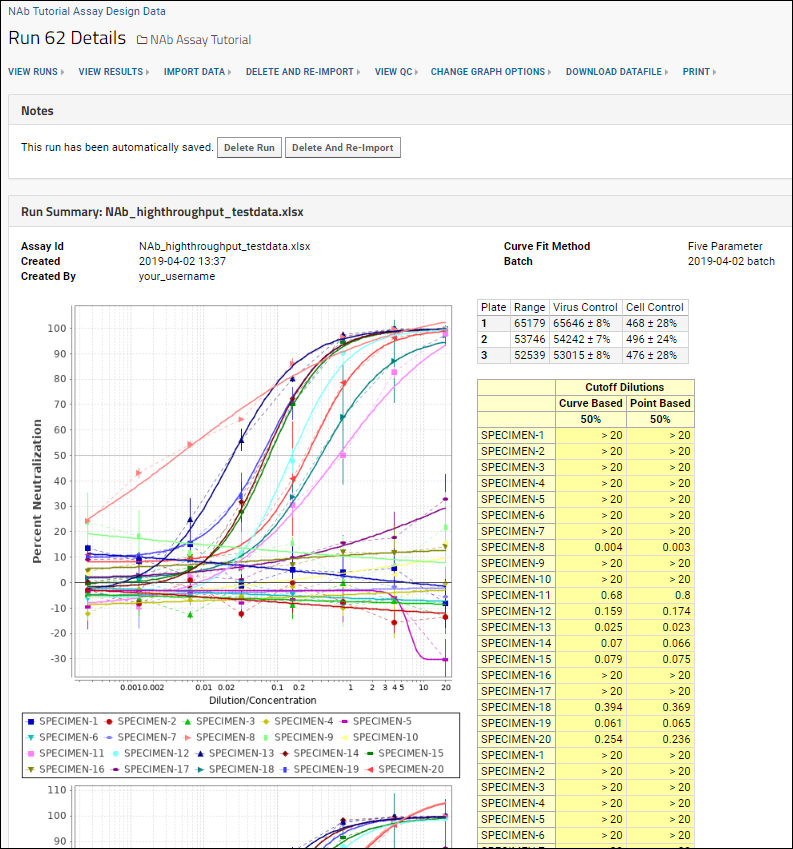When you import assay data, you declare how you will identify your data for later integration with other related data. See
Data Identifiers for more details. In this case we'll use SpecimenIDs provided in the sample file, which match SpecimenIDs used in our LabKey demo study.
Import NAb Data
Locate the LabKeyDemoFiles package you downloaded and unzipped in the
previous step. The two files you will upload in this step are in the
[LabKeyDemoFiles]/Assays/NAb/ directory.
- Return to the NAb Assay Tutorial page if you navigated away.
- In the Assay List web part, click NAb Tutorial Assay Design.
- Click Import Data.
- For Participant/Visit (i.e. how you will identify your data):
- Select Specimen/sample id.
- Do not check the box for providing participantID and visitID.
- You do not need to select a target study at this time.
- Click Next.
- On the data import page:
- Leave the Assay ID blank. The name of the data file will be used as the AssayID by default.
- For Cutoff Percentage (1) enter 50.
- From the Curve Fit Method pulldown, select Five Parameter.
- For Sample Metadata:
- Click Choose File (or Browse).
- Select "NAb_highthroughput_metadata.xlsx" from the [LabKeyDemoFiles]/Assays/NAb/ directory.
- For Run Data select "NAb_highthroughput_testdata.xlsx" from the same sample location.
- Click Save and Finish. If you see an error at this point, check the troubleshooting section below.
- View the run summary screen.
When the import is complete, the run summary dashboard gives you a quick way to validate the data. In the next step we will review in more detail the information and options available here.

Troubleshooting
If you see a message like this:
There was an error parsing NAb_highthroughput_testdata.xlsx.
Your data file may not be in csv format.
It indicates that your plate template was created using the wrong format. You may have selected the 96 well variant instead of the 384 well one. Return to the previous step, create a new plate template of the correct format with a new name, then edit your assay design to select it instead and repeat the import.